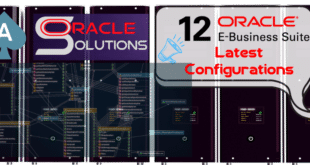Oracle AD Controller
- ADCTRL is used to manage worker processes that perform a pivotal role in the function of batch processing for patching and many other Applications activities.
- ADCTRL is located under $AD_TOP/bin directory with Oracle E-Business Suite.
Procedure to Run AD controller
Step 1 : Login as Applications Tier user & run the environment file.
$cd /prod/ebs/apps/prodappl
$ . ./APPSORA.env
Step 2 : Run the following AD controller command.
$ adctrl
AD Controller Menu
- Show worker status
- Tell worker to restart a failed job
- Tell worker to quit
- Tell manager that a worker failed its job
- Tell manager that a worker acknowledges quit
- Restart a worker on the current machine
- Exit
Checking Status of the Worker
choose the first option “Show worker status“.

Note: If there is no session used by the workers, then the following message will appear:
Error: The FND_INSTALL_PROCESSES table does not exist.
This above given table is used for communication with the worker processes, and if it does not exist, it means that the workers are not running, and the ad utility has not started them yet.
Meaning of Worker Status
STATUS |
Description |
| Waiting | The worker is idle. |
| Assigned | A job was assigned by the manager to a worker but the worker didn’t start the job. |
| Running | The worker is running a job. |
| Failed | The job failed due to an error. |
| Fixed, Restart | When a jobs restart after the error has been fixed (during this time the worker run the failed job). |
| Restarted | After the error has been fixed, the worker will have the status “Fixed, Restart” and after that “Restarted”. (The status will not change to “Running”) |
| Completed | The job was completed and the manager did not yet assigned another job to that worker. |
Database Processing Phases Concept
- Whenever a Database Patch operation will runs, the tasks are divided into functions. This is done by Oracle when the patch is created.
- Suppose a patch will create 2 tables and 2 sequences. In this case the patch driver contains 2 phases, one for tables creation and one for sequences creation.
- Because the sequences could be created in the same time, this will be done in parallel by using more workers.
Examples of Database Processing Phases:
seq = create sequence
tab = create tables, synonyms, grants privileges on tables pls = create package specification
plb = create package body
vw = create views
 Oracle Solutions We believe in delivering tangible results for our customers in a cost-effective manner
Oracle Solutions We believe in delivering tangible results for our customers in a cost-effective manner



